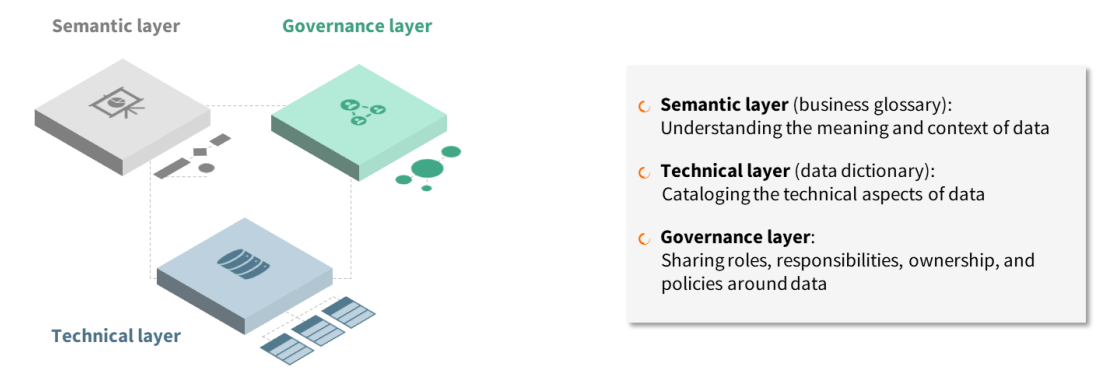In this article, we delve into the concept of a data catalog, unveiling its key features and the value it brings to organisations. Gain practical insights into real-world implementation challenges, learn best practices to face these challenges, and explore our hands-on, end-to-end methodology for deploying data catalogs effectively.
Our insights are delivered from a technology-agnostic standpoint, ensuring you can make informed decisions when selecting and deploying the right data catalog for your context. Join us as we share our comprehensive analysis on the topic where our seasoned expertise and forward-thinking strategy come together to provide you with the foresight to stay ahead in the metadata management landscape.
Why the buzz around data catalog today?
A data catalog is a metadata management tool. It serves as a centralised repository for metadata, or, in simpler terms, information about data assets. This tool is pivotal for both business and technical users, providing a unified definition for data assets, facilitating quick location of data within IT systems, tracking data movement, and assessing data quality.
Financial institutions are increasingly turning to it as an enabler to help comply with regulations, such as circular 23/1, Basel Committee on Banking Supervision (BCBS), General Data Protection Regulation (GDPR), and New Federal Act on Data Protection (nFADP), to ensure high-quality data for decision-making, analytics, and artificial intelligence (AI), or simply to gain clearer visibility into their data within a complex IT landscape.
What’s inside: Exploring the information in data catalog
In a data catalog, metadata is categorised into three main areas: Business, technical, and governance. This classification is mirrored in the architecture of the catalog, which is designed with three corresponding layers.

Ensuring tight mapping between the layers is fundamental for a cohesive data catalog experience. It allows for seamless navigation from high-level business concepts down to the granular technical details, all while being aware of the governance policies in play.
Challenges in implementing a data catalog solution
While these metadata management tools have seen impressive innovations, such as AI-enabled capabilities and direct data harvesting connectors, its practical implementation often reveals shortcomings. These limitations mainly pertain to integration, customisation for client-specific needs, and the level of automation offered.
The successful implementation of a data catalog relies on several pivotal factors. These encompass a profound understanding of your data domains and organisational capabilities, awareness of your IT legacy constraints, and a strategic approach to selecting the right platform.
Implementing a data catalog solution with the right partner
Expert consultancy plays a key role in guiding businesses to select and effectively deploy the most suitable metadata management tool for their unique situations.
At Synpulse, we recognised this trend early on and dove deep into the subject to understand the true benefits and pitfalls in implementing data catalogs. We offer our insights through a technology-agnostic article that equips you with the understanding necessary to select and leverage the most suitable data catalog for your needs. This comprehensive review reflects our hands-on experience and our commitment to innovative strategies.


